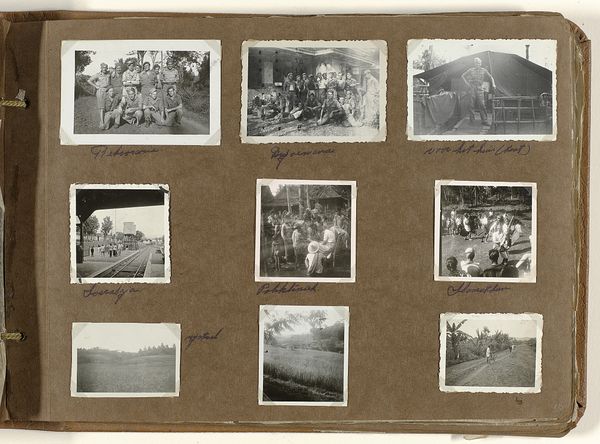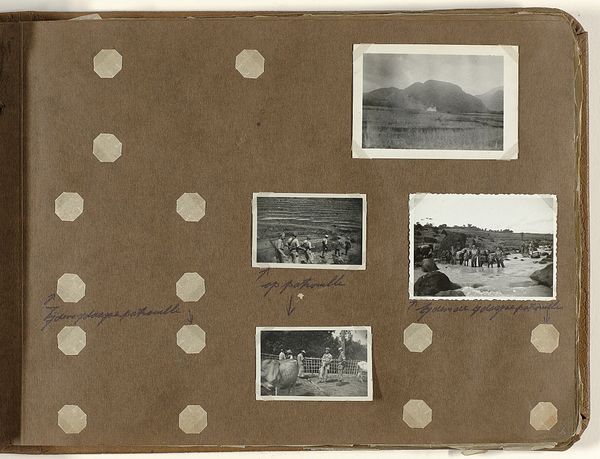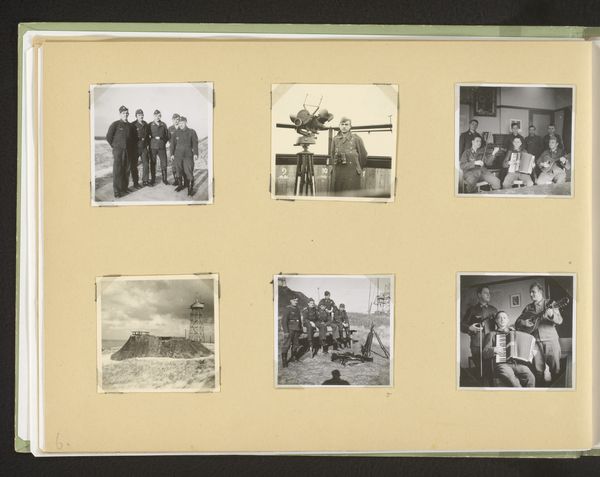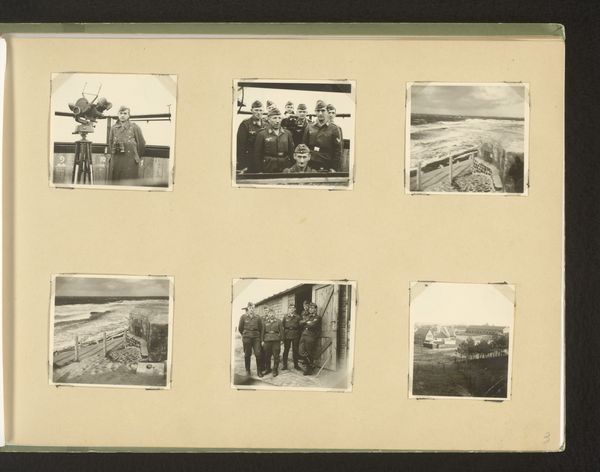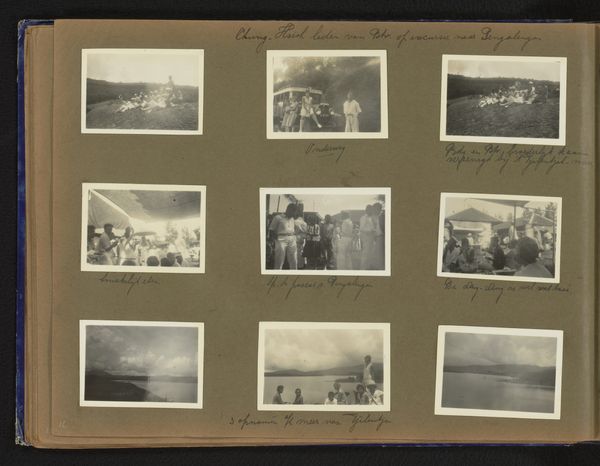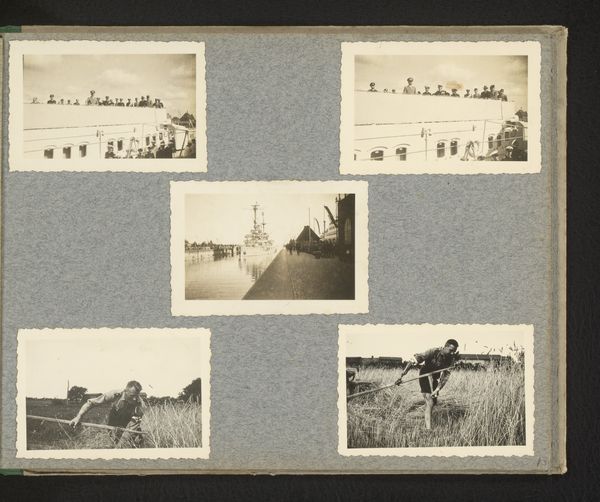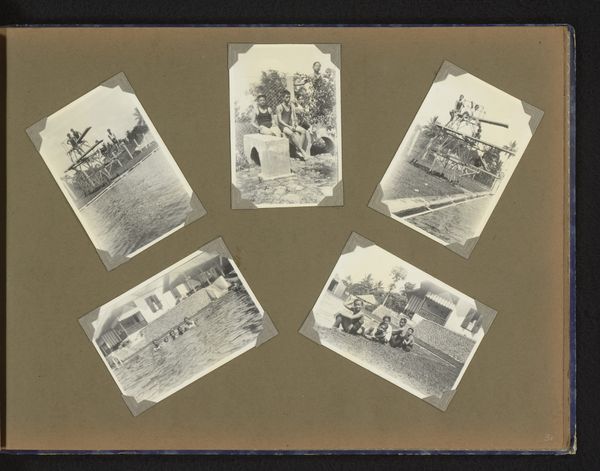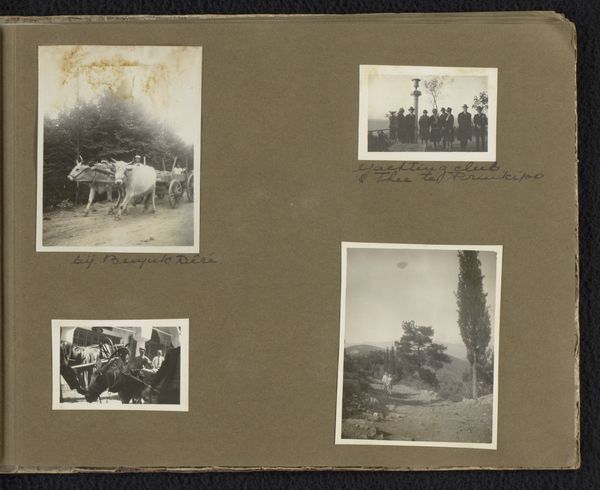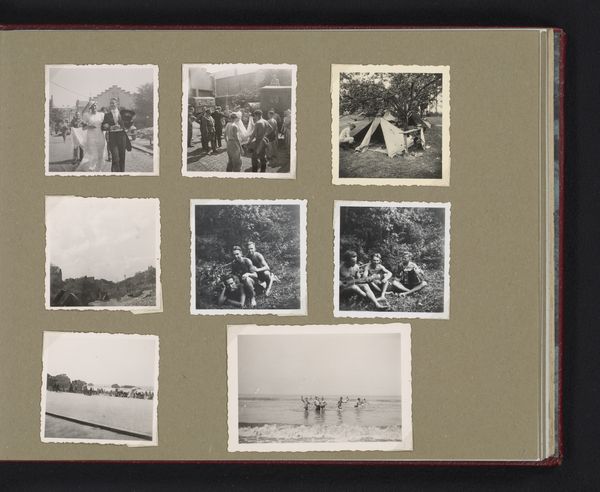
print, photography, albumen-print
#
portrait
#
narrative-art
# print
#
landscape
#
photography
#
albumen-print
Dimensions: height 24 cm, width 34 cm
Copyright: Rijks Museum: Open Domain
Curator: Looking at this page, I immediately get a sense of varied lives pieced together—such stark tonal contrasts across the images! Editor: We're examining a page from an album, created by an anonymous photographer, entitled "Verblijf en verhuizing tentenkamp Reksosari", which roughly translates to "Staying and Moving Tent Camp Reksosari," dated between 1948 and 1949. Each photograph is a mounted albumen print. Curator: The materiality certainly speaks of another era. Each print, though small, appears carefully mounted onto the larger album page; a physical manifestation of preserving memory. The tonal range seems to compress human stories into shades of resilience. Editor: Note how the layout directs your eye, top-left to bottom-right. It’s almost like reading a story of displacement: starting with camaraderie around a table, moving to images of shelters, water sources, and the surrounding landscape—even figures walking a path, and all of that makes this layout really compelling. Curator: True! Seeing how they’ve captured social context amidst bare landscapes makes me consider what photographic technology these people would've had, considering this seems like they documented the impact of shifting social patterns right in the tent camp and beyond it. What material constraints might they have faced and how might these affected the choices they made in this layout? Editor: Interesting you bring that up; to me, the limited tonal palette of the albumen prints flattens the space, almost rendering these documentary shots into studies of texture and form. The framing and the darkroom manipulation further enhance those properties and make you wonder how the photographer thought. Curator: Yet, don't you feel the human element grounds it? While we analyze forms and tones, thinking of these scenes being snapshots of someone's relocation reveals the narrative potential that goes beyond the photographic object. This gives context of people moving to an unfamiliar area in the mid-20th century, don’t you think? Editor: Indeed, that intimate dimension deepens our understanding. Each perspective, the personal and technical, merges— enriching the album as a profound cultural and artistic document, as well as photographic memory of that displacement event.
Comments
No comments
Be the first to comment and join the conversation on the ultimate creative platform.
